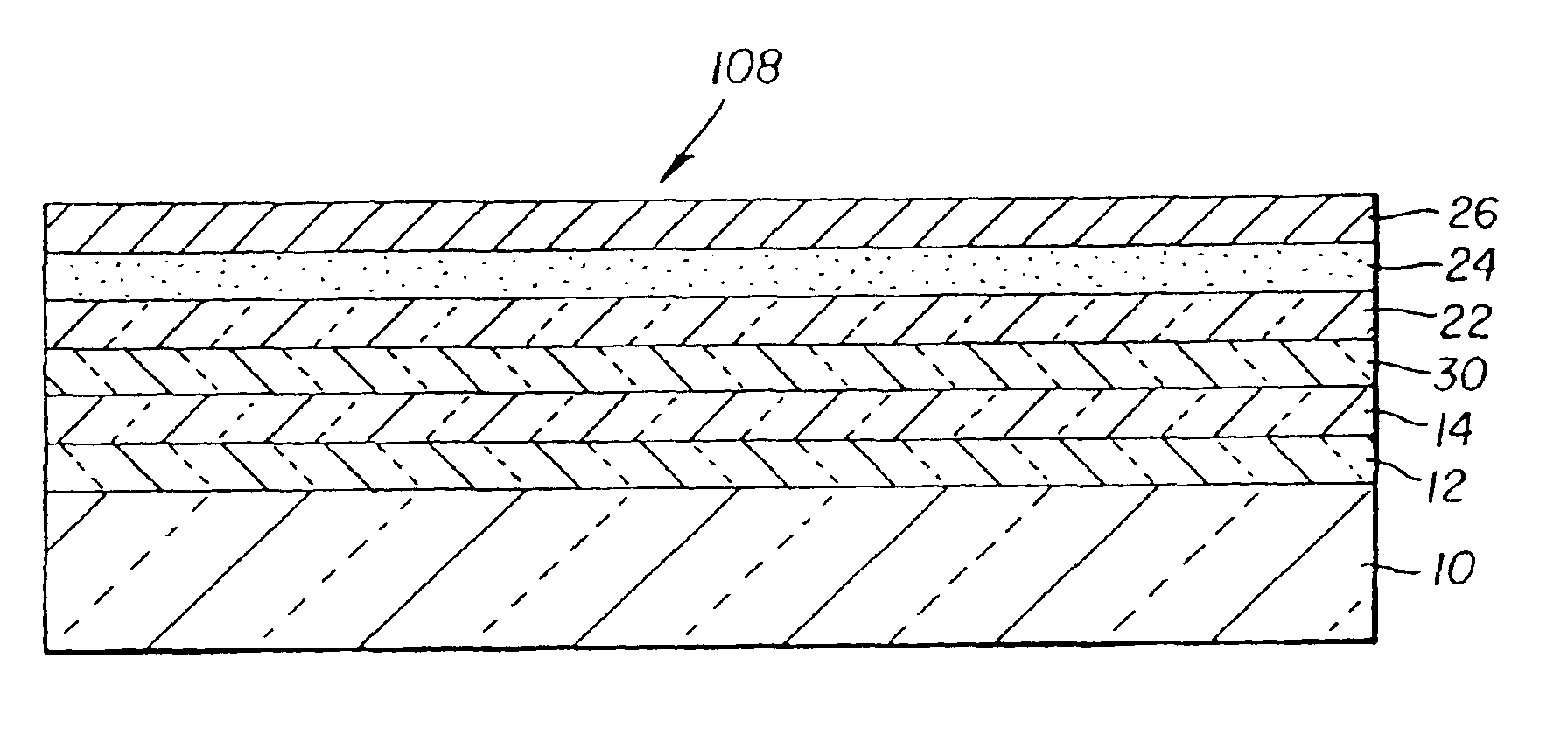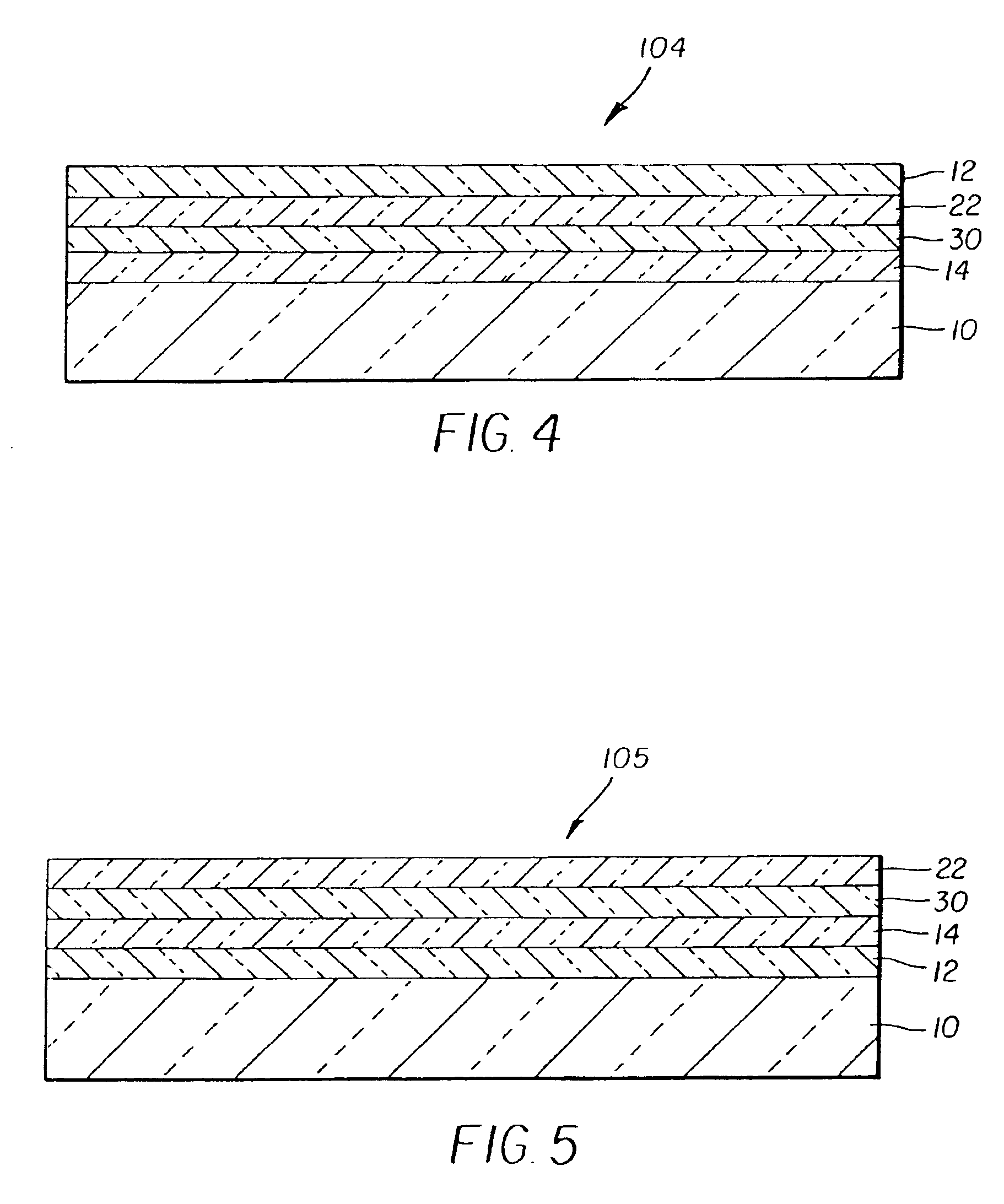Organic light-emitting device having enhanced light extraction efficiency
a light-emitting device and organic technology, applied in semiconductor devices for light sources, discharge tubes luminescnet screens, lighting and heating apparatus, etc., can solve the problems of limiting the efficiency of oled devices, inefficiency in extracting photons generated by, and the majority of photons generated by recombination process are actually trapped in devices, so as to achieve the effect of improving light extraction efficiency
- Summary
- Abstract
- Description
- Claims
- Application Information
AI Technical Summary
Benefits of technology
Problems solved by technology
Method used
Image
Examples
Embodiment Construction
[0032]FIG. 1 is a schematic illustration of the cross section of a typical conventional OLED device 101 including a substrate 10, an anode layer 14, an organic EL element 30, and a cathode layer 22. Organic EL element 30 can include one to several sub-layers, including a hole injection layer, a hole transparent layer, a light emitting layer, an electron transport layer, and an electron injection layers. Most commonly, substrate 10 and anode layer 14 are both transparent, cathode layer 22 is reflecting, and light generated from the device is emitted through anode layer 14 and substrate 10. This is commonly referred to as a bottom emitting OLED device. An OLED device can also be top emitting. In a top emitting OLED device, the anode layer is made reflective and the cathode layer is made transparent and the generated light is emitted through the cathode layer. The discussion below based on bottom emitting devices is also applicable to top emitting devices. In addition, the layer sequen...
PUM
| Property | Measurement | Unit |
|---|---|---|
| reflectivity | aaaaa | aaaaa |
| work function | aaaaa | aaaaa |
| transparent | aaaaa | aaaaa |
Abstract
Description
Claims
Application Information
 Login to View More
Login to View More - R&D
- Intellectual Property
- Life Sciences
- Materials
- Tech Scout
- Unparalleled Data Quality
- Higher Quality Content
- 60% Fewer Hallucinations
Browse by: Latest US Patents, China's latest patents, Technical Efficacy Thesaurus, Application Domain, Technology Topic, Popular Technical Reports.
© 2025 PatSnap. All rights reserved.Legal|Privacy policy|Modern Slavery Act Transparency Statement|Sitemap|About US| Contact US: help@patsnap.com



